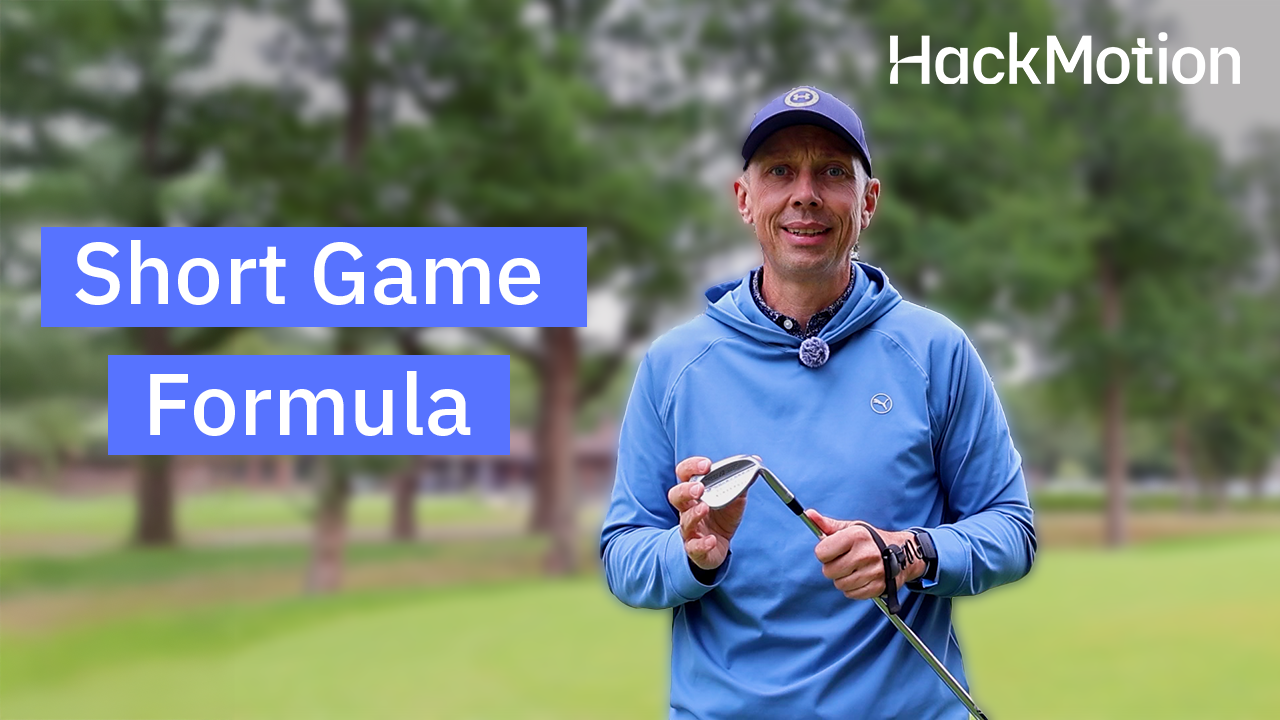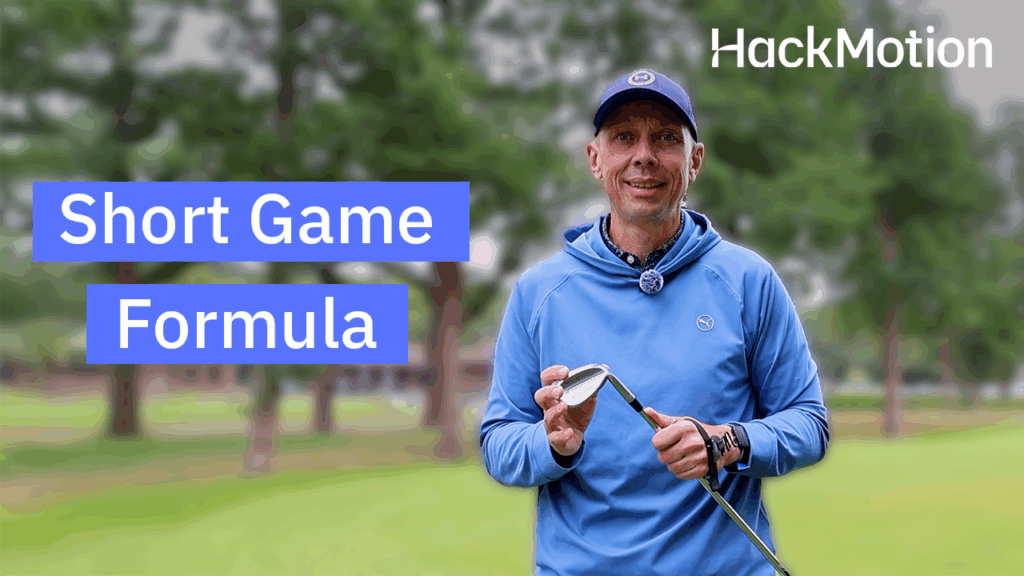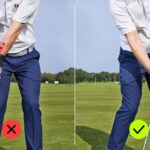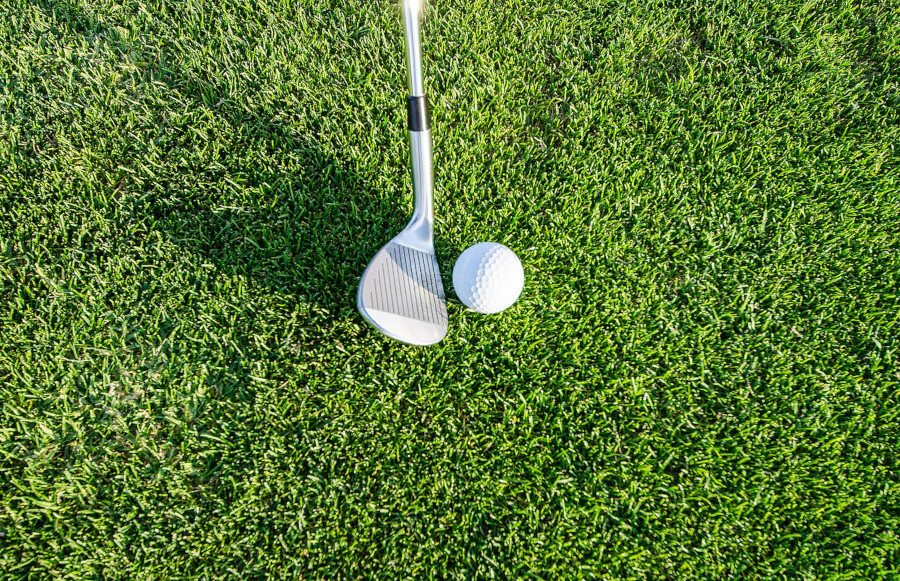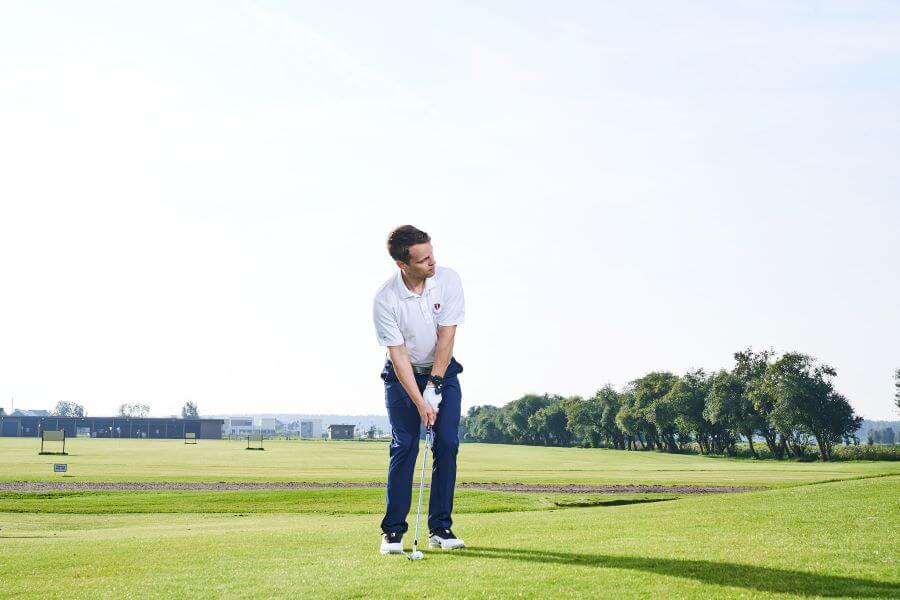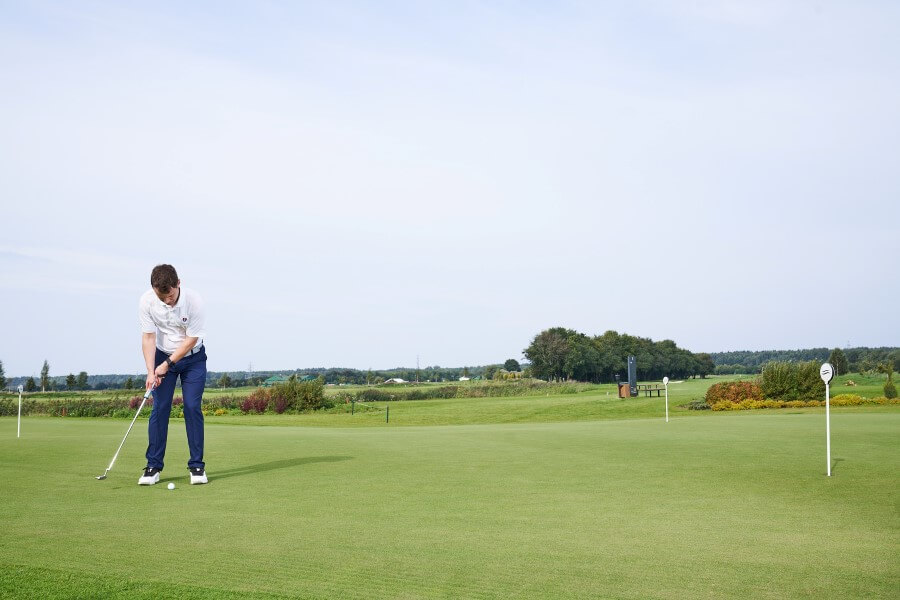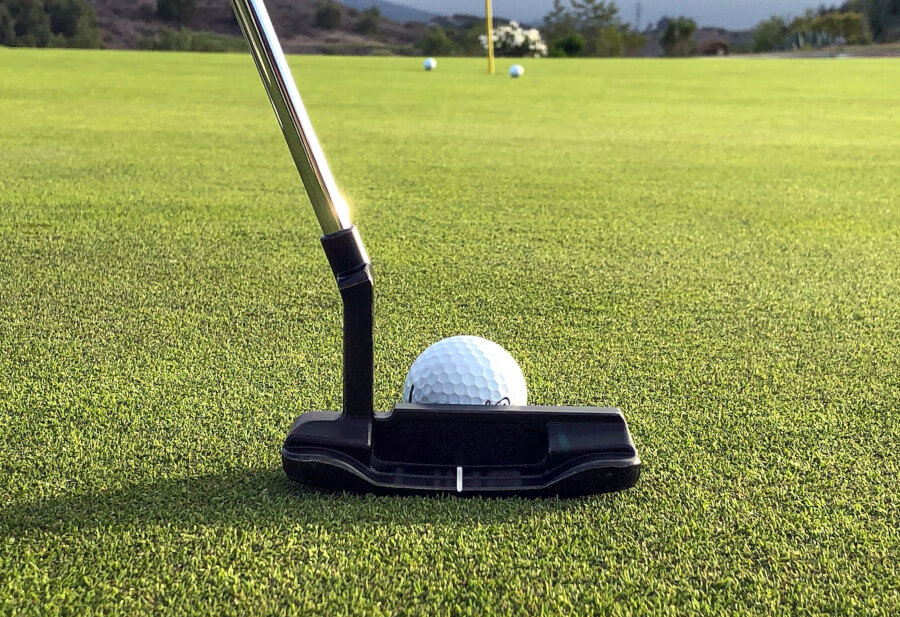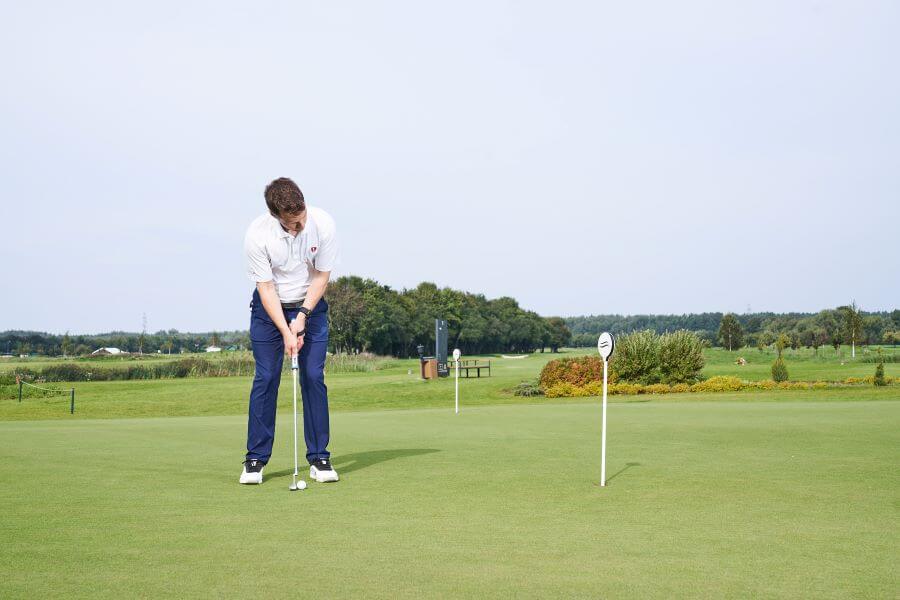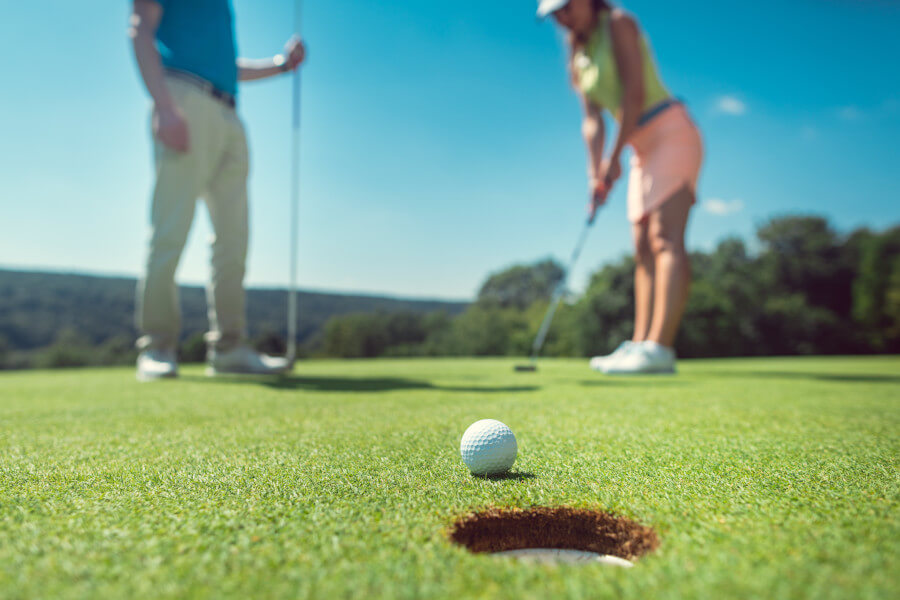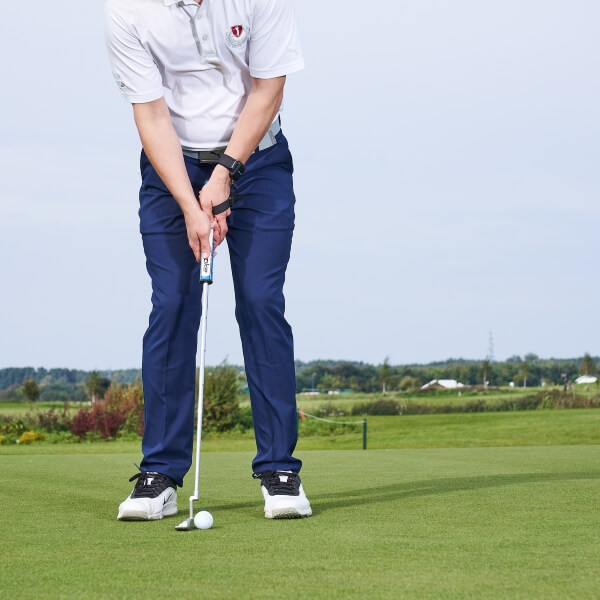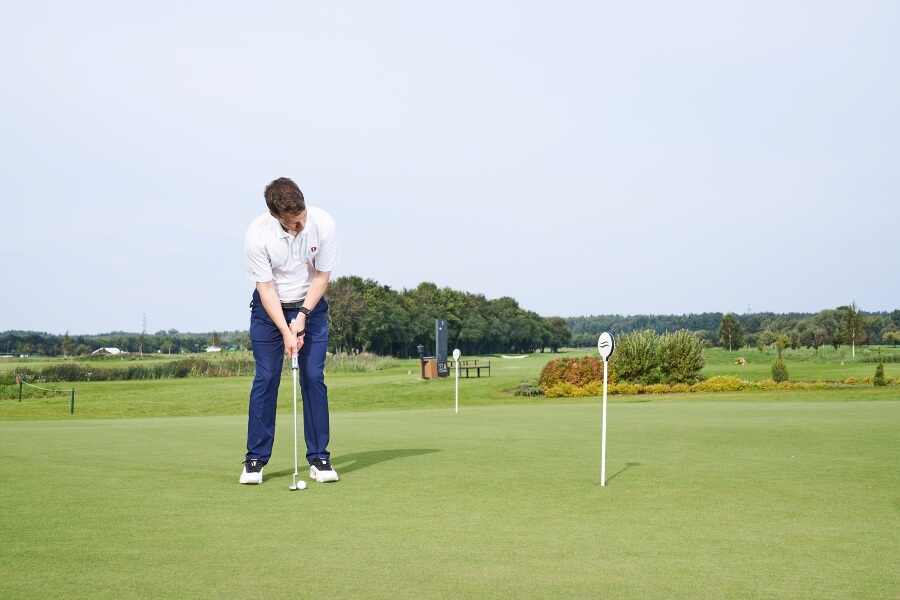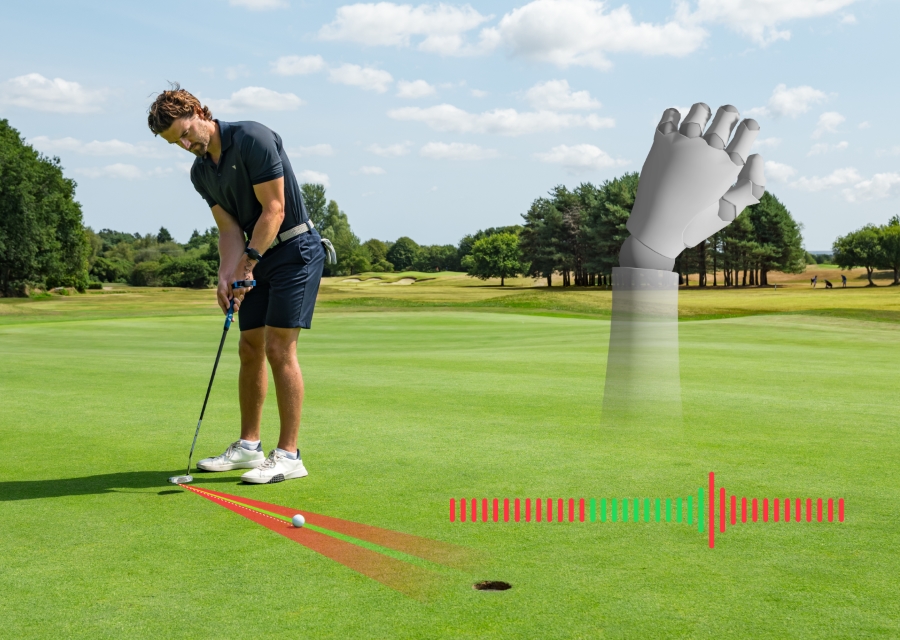How to Stop Blading Chip Shots (6 Fixes + Drills That Actually Work)
There may be no worse feeling in golf than hitting a bladed chip that goes screaming across the green, forcing you to make the embarrassing and long walk to hit it again. This demoralizing situation is why many people resort to using their putter from suspicious lies off the green.
While blading a chip is terrifying, it should not be a reason to avoid chipping. Chipping is an offensive shot in golf and should be used to your advantage. You should welcome a chip and look at it as a chance to save a stroke.
Understanding what causes a bladed chip is the first step to eradicating this shot from your game. Once you know, you’ll be able to make the suggested changes below and integrate them into your game with the provided drills.
Stop fearing chipping and start addressing the issue to turn this weakness into a strength.
Stop Blading Chip Shots (Key Takeaways)
Focus on these key takeaways if you don’t have time to review the tips below in detail. It will also help to print and bring the drills below to direct your practice in a professional manner and eliminate bladed chips from your game once and for all.
- Adjust your setup position to have more weight on your lead foot with the ball in the middle or slightly back.
- Focus on a smooth tempo and always accelerate through the ball.
- Maintain stability throughout your chipping stroke by keeping your spine angle and head still.
- Keep your wrists quiet and never “flip” at impact.
- Rotate your torso to move your arms, not the other way around.
- Use different clubs to address specific lies.
6 Tips to Stop Blading Chip Shots for Good
Bladed chips are caused by a few different things, such as setup, swing, and lie.
Use these tips to identify the cause of your bladed chips so you can predict when they will happen and prevent them with proper preparation.
Optimize Your Address Position
Bladed chips can be caused by misplaced weight. Oftentimes, golfers will fall back, causing the bottom of their swing to end up off the ground.
Start with roughly 60–70% of your weight on your lead foot, your sternum slightly ahead of the ball, and the ball around center. This shifts the bottom of your swing arc forward, causing the club to move slightly downward at impact.
When the low point sits behind the ball, the club is already rising as it reaches the ball, and the leading edge can catch the equator, causing a blade. Getting your pressure and chest forward makes the turf your “backstop,” not the ball.
Smooth Tempo and Always Accelerate
A jerky decelerating swing is never a good thing. This is the most common cause of bladed chips, and even if a golfer has the proper mechanics, their chips can be ruined by poor tempo and deceleration.
Adopt a calm rhythm and let the club gently accelerate past the ball rather than decelerating into it. Deceleration makes players release the angles early or flip the wrists to add speed, which raises the strike and invites thin contact.
A predictable tempo with a tidy, committed follow-through stabilizes the bottom of the arc and keeps the club traveling through the turf instead of quitting at the ball.
Maintain Your Height and Posture
This is easier said than done, as most people automatically assume they already do this. You can check for yourself by using a mirror.
Take your setup in front of the mirror and put a piece of tape on the mirror where your forehead is. Take your swings while your forehead remains on the piece of tape.
Posture Do’s
- Steady chest over the ball
- Soft but stable knees
- Quiet lower body
- Relaxed arms
Posture Don’ts
- No standing up
- No dipping
- No pulling the handle in toward your body
- No changes in height or distance from the ball
Keep a Stable Wrist Structure
Wrist flipping at impact is a huge contributor to bladed chips. It happens when golfers try to shrink their swing for short shots, and instead of using their shoulder rotation, they flip their wrists to generate power.
To prevent bladed chips, feel a flat lead wrist and a slightly bent trail wrist through impact, avoiding any last-second “scoop.”
Once your wrists are set at address, they can stay in that position for the duration of the chipping swing.
Excess hand action changes loft, face angle, and the height of the leading edge right where it matters most.
Monitoring these minute changes is made easier with the Hackmotion system due to its advanced sensors. They track even the smallest movements and alert you when your wrists are out of position. The app even provides personalized drill suggestions, allowing you to address your specific areas of weakness.
Use Your Chest
Instead of using your arms or wrists to generate power, let your chest rotate toward the target on the way through and allow the handle to keep traveling.
Stalling the body and then flicking the clubhead past your hands adds loft unpredictably, moves the low point behind the ball, and exposes the leading edge to the ball’s equator.
A small, smooth pivot carries the handle forward, keeps the arc shallow and stable, and delivers a descending, centered strike.
Match Your Club and Set Up for The Lie
Use your equipment to your advantage and don’t always choose the same club. Read the lie and choose the tool that gives you the most forgiveness.
- On tight, firm turf, a wedge with moderate bounce or even a pitching/gap wedge with a neutral shaft keeps the leading edge close to the ground without excessive shaft lean.
- In fluffy lies, use more bounce with a neutral face so the sole can slide without going under the ball.
Also, pick a realistic landing spot and trajectory—choosing a simpler shot with the right club reduces the urge to manipulate the strike at the last moment, which is when blades happen.
Drills to Prevent Bladed Chips
Preventing bladed chips is a lot like preventing any bladed iron shot, just on a smaller scale.
Some of the drills below are meant for iron shots, but can be easily adapted to chips. Use the instructions to modify these drills for any chip that you tend to blade.
Towel Compression Drill
This drill will help you with your setup as well as your contact point. It provides a great physical and visual barrier for your muscles and body to learn from.
It’s best if you use this drill from tight lies to really feel what crisp contact should feel like. Don’t be afraid to try it from other lies, though, and definitely use this drill with multiple clubs.
- Video Timestamp: 0:17 – 3:45
Towel Compression Drill – Step by Step
- Lay down a small towel on the ground about 10 inches behind your ball.
- Take your normal (or new) chipping posture and setup, and hit the chip without touching the towel.
- You should always hit the ball first, not the towel or the ground between the towel and the ball.
- If you find it to be easy, then move the towel closer to the ball.
Lead Arm Only Chipping Drill
Use this drill to minimize your wrist action in the swing. It will help you keep a straight and stable lead arm, which will create more consistent contact.
It may take some getting used to, as this is not a normal feeling for most golfers, but mastering this drill will help you better judge your chipping distances and eliminate bladed chips from your game.
Lead Arm Only Chipping Drill – Step by Step
- Address the ball with your new setup position to avoid blading chips.
- Just before you initiate your swing, remove your trailing arm and let it hang by your side.
- Now take your chipping stroke as you normally would while keeping your lead wrist and arm quiet as they swing through the ball.
- You can also combine this drill with the above for an added challenge.
Towel Under the Arms Drill
To further avoid bladed chips, you’ll want to swing more with your body and less with your arms and wrists.
This drill will help you incorporate your torso and derive power from bigger muscles. This will increase your consistency and give you a wider margin for error. Meaning your bad shots won’t be that bad.
Towel Under the Arms Drill – Step by Step
- Take a normal-sized golf towel and tuck each end under your arms so it’s stretched across your chest.
- While keeping the towel secure, hit chips from different lies and distances.
- The towel should remain in place and not move at all. If it moves, that means your arms are disconnected from your body, and your body is not in sync with the swing.
One-Footed Chipping Drill
This is an ancient drill that old professionals have been suggesting for decades. If you don’t have Hackmotion yet, use this drill.
Although Hackmotion is a far superior training aid and will help you with all aspects of your game, not just chipping, this one-footed drill is designed specifically to eliminate bladed chip shots.
One-Footed Chipping Drill – Step by Step
- Address the ball while lining it up off your lead foot.
- Lift your trailing foot off the ground and move it behind you while lightly resting it on the tips of your toes (like a ballerina).
- Now hit chips while maintaining your balance.
- If you stumble, try to stumble forward, not backwards. Falling backward is what causes bladed chips.
Final Thoughts
The final thought I will leave you with is not to focus on stopping bladed chips, but rather to train your mind to create great chips.
Sometimes the mind does not recognize the word “don’t” and only hears “bladed chip”. So if you busy your mind with positive thoughts like proper setup, accelerating stroke, and a clear visual of your goal, you’ll have a much better chance at success.
This is easier to do with Hackmotion because the system tracks your movements and practice sessions.
You can use the information to build a healthy relationship with chipping, focusing more on the things you’re doing right than the things you do wrong. The HackMotion is like having a professional coach at your side, but for a fraction of the cost.
